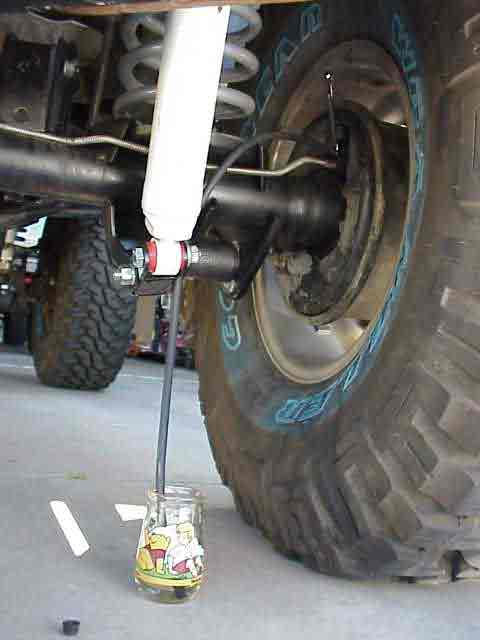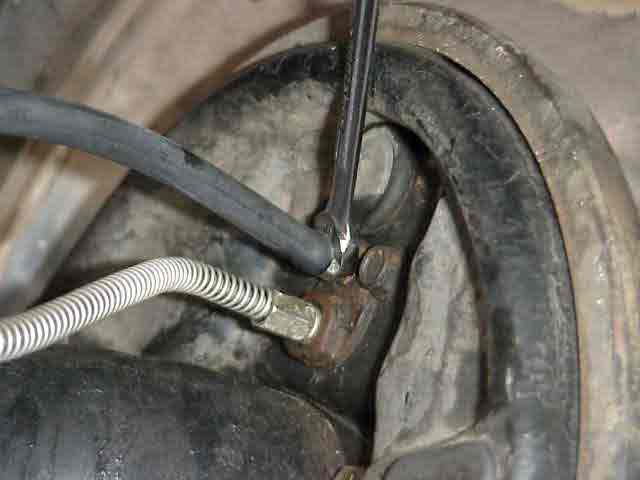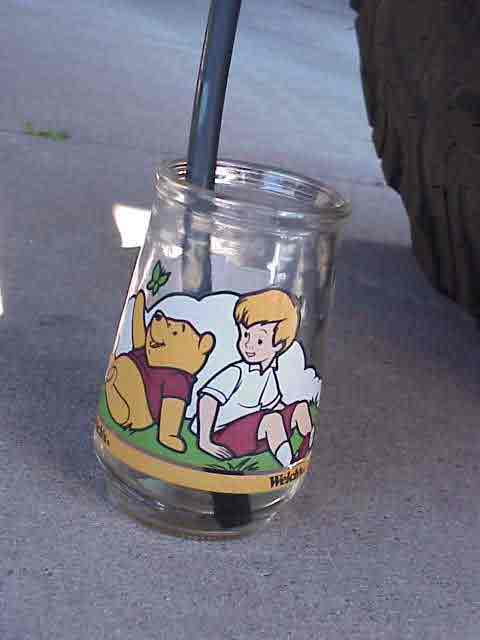Eventually, we will all need to do some work on our brake system that will result in the need to bleed the system. If air becomes trapped in the brake lines, which happens when we disconnect a metal line or rubber brake hose, the brake pedal will feel soft and mushy. When you push the brake pedal, the air compresses while the fluid does not, and will sometimes allow the pedal to bottom out on the floor boards. In order to have effective brakes, you must bleed the air from each brake line (all four corners of the vehicle) in the proper sequence assuming you did something like replacing the master cylinder. If you only worked on one of the axles, then you only need to bleed the two brakes on that axle. If you affected both axles, start with the rear passenger side tire and follow up with the rear driver side tire. Next, move to the front passenger side tire and finish with the front driver side tire. In other words, you start at the brake cylinder or caliper that is farthest from the master cylinder and finish with the one that is nearest the master cylinder.

Here is my typical brake bleeding setup. Pretty fancy, eah? I’ll tell you right now that you will always get better results if you use a Pooh Bear glass! LOL I put about an inch of brake fluid in the glass. I use an 18″ long piece of vacuum line hose that fits tightly over the bleeder nipple.

Here you can see the rubber line attached to the bleeder nipple. As you can see, there is still room to put a small wrench in place so the the bleeder nipple can be opened and closed during the bleeding procedure.
With the engine NOT running (yes, I said not running), crack open the bleeder valve and let it gravity drain for a minute or two. You may or may not see any fluid come out. Now, with the valve still open, have your helper sit in the driver seat so that he or she can completely depress the brake pedal. Instruct your helper to push hard on the pedal and continue doing so until you tell them to stop. When they have applied pedal pressure and it has gone to the floor, close the bleeder valve and instruct your helper to slowly release the brake pedal. Wait about 5~8 seconds and repeat this process again…..open bleeder valve, apply hard brake pedal pressure….watch the air and fluid bubble out….close the bleeder nipple…..slowly release the brake pedal.
Depending on how much air is in the brake lines, you will need to do the above procedure a number of times. Once I get three or four good “flows” at the bleeder valve, where there is no longer any air bubbling out, I move to the next tire. If it has been a while since your brake fluid has been flushed, you will notice some pretty dark fluid coming out the line. When the new fresh fluid replaces the old fluid in the brake lines, you’ll see much cleaner fluid coming out (which is why I prefer to use a glass container). On the front axle, you may want to switch back and re-do the passenger caliper once again after finishing with the driver’s side caliper.
Be sure to check your master cylinder level before you start bleeding the first time and after finishing with each tire. The brake fluid level in the master cylinder reservoir will drop as the trapped air is pushed out of the brake lines. If you let the reservoir level drop to low, it will suck air and put it into the system. This is NOT cool and then you will have to start all over since you will have air at the very beginning of the brake lines and it all needs to be bled off. You don’t want this to happen! I can usually bleed both back brakes before I need to add fluid. I then can normally do both front brakes before topping off the reservoir and calling the job done.
Be careful NOT to get brake fluid on your paint finish. The two don’t get along and your paint will be the one that comes out on the short end of the stick.

I thought I would provide you with a close-up of the Pooh Bear glass so you know which one to get. Like I said, I get superior results when Pooh helps me! LOL
